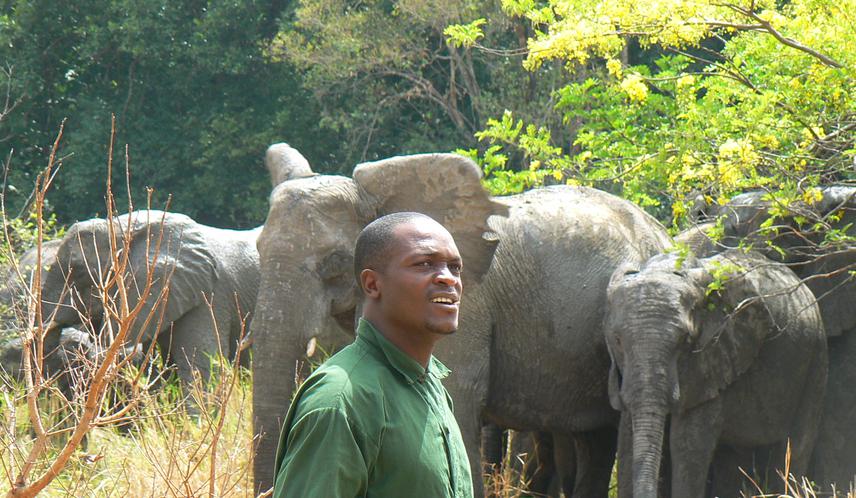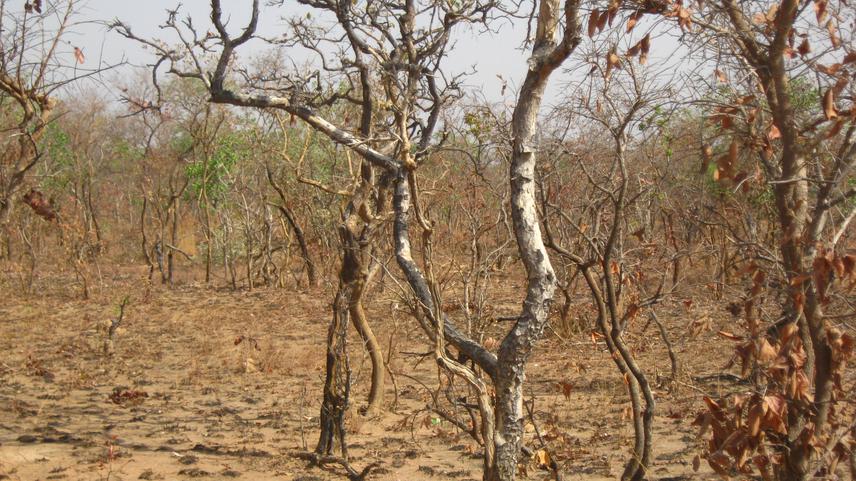Longtong Turshak
Other projects
7 Jul 2009
Fire Regimes and its Implication on Trees and Tree Species Utilize by Birds for Nesting in the Savanna Woodlands of Yankari Game Reserve, Nigeria
7 May 2015
Fire and Herbivory Impact Savanna Vegetation: Understanding the Fire, Herbivore and Woodland Community Interplay in One of Nigeria’s Foremost Game Reserves
3 Mar 2023
Delivering Better Ecological and Social Outcomes in a Nigeria’s Foremost National Park at the Brink of Losing its Conservation Value
The project sets to investigate the effects of fire and herbivory on savanna woodland in relation to the foraging ecology of large herbivores.

Longtong Turshak pose for a photo with a herd of elephants.
Line transects will be used to record densities of trees and trees utilised as food by elephants. Eighty transects of 1000 m long used during the first RSG will be located in the Savanna woodlands by the use of GPS. The following variables will be recorded at each 100 m section along the transect: size classes of trees base on height, number of stems and DBH, density of browsed trees by Elephants and other herbivores, density of dead trees due to elephant herbivory, all tree species and tree species utilise as food by Elephants and other large herbivores will be recorded. While on transect visit, feeding herds of any of the six large herbivores will be recorded in order to identify species of trees fed by each group. All the variables will be measured within a 20 x 20 m square plot.

Part of the woodland burnt.
To model the effects of herbivory and fire on tree community structure, a stage class structured matrix model will be used. Trees will be assigned to one of nine size classes based on their height. Trees in the four smallest size classes are assumed to be juveniles and could either grow into the next size class, or die in any given time step. Trees in the five largest size classes will be allowed the additional option of remaining in the same size class for more than one time step, and trees in the two largest size classes will be considered reproductively mature. For each of these matrices, the probabilities of mortality and survival will be changed to include both baseline mortality and mortality from the additional disturbance, either herbivory or herbivory & fire. All data analyses will be carried out using SPSS, Matlab and Mathematica tools. Findings from this project incorporating elements in the first RSG will be presented to the Management and Staff of the Yankari Game Reserve for possible implementation. Data for this study will be collected during 2012 and 2013 year.